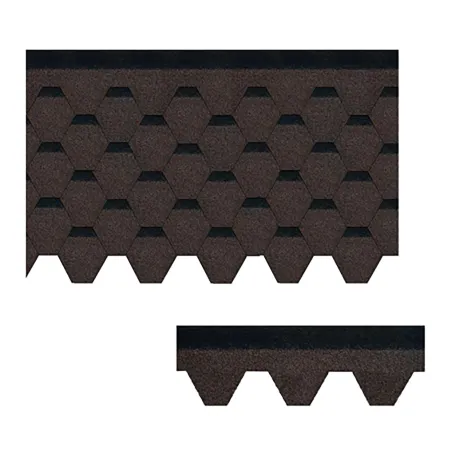
វិច្ឆិកា . 07, 2024 11:29 Back to list
Efficient and Durable Solutions for Modern Asphalt Roofing Systems
Understanding Asphalt Roofing Systems A Comprehensive Overview
Asphalt roofing systems have become one of the most popular choices for both residential and commercial buildings. Known for their durability, cost-effectiveness, and versatility, these roofing options have been widely used for decades. This article will delve into the various aspects of asphalt roofing systems, including their types, benefits, installation procedures, and maintenance tips.
Types of Asphalt Roofing Systems
Asphalt roofing systems primarily come in two forms asphalt shingles and built-up roofing (BUR).
1. Asphalt Shingles Asphalt shingles are the most common type of roofing material used in residential buildings. They are available in two main categories fiberglass and organic. Fiberglass shingles are lighter and more fire-resistant, while organic shingles are made from recycled paper and have a higher asphalt content, making them heavier and more robust. Both types provide excellent protection against the elements and are available in a multitude of styles and colors, allowing homeowners to achieve their desired aesthetic.
2. Built-up Roofing (BUR) Built-up roofing is primarily used in commercial buildings and flat-roofed structures. It is created by stacking multiple layers of bitumen (asphalt or coal tar) and reinforcing fabrics. The layers are then topped with gravel or a reflective coating to enhance durability and UV protection. BUR systems are known for their long lifespan and excellent waterproofing capabilities, making them ideal for flat roofs.
Benefits of Asphalt Roofing Systems
Asphalt roofing systems offer several advantages, contributing to their widespread popularity
1. Cost-Effectiveness One of the most significant benefits of asphalt roofing is its affordability. Compared to other roofing materials like metal or slate, asphalt roofing systems are budget-friendly, making them an attractive choice for many homeowners and business owners.
2. Durability and Longevity Asphalt roofs are designed to withstand various weather conditions, including heavy rain, snow, and wind. When properly installed and maintained, asphalt shingles can last 20 to 30 years or more. Similarly, BUR systems can last up to 40 years.
3. Versatile Aesthetics With a variety of styles, colors, and textures available, asphalt roofing can complement any architectural design. Homeowners can choose from traditional, contemporary, or decorative options to enhance curb appeal.
4. Ease of Installation The installation of asphalt roofing systems is relatively straightforward, and many contractors are experienced with the process. This efficiency often translates to lower labor costs and quicker project completion.
5. Energy Efficiency Many modern asphalt roofing systems are designed with energy efficiency in mind. Reflective coatings can help reduce cooling costs during hot months by reflecting sunlight away from the building.
Installation Procedure
asphalt roofing system

Installing an asphalt roofing system requires careful planning and expertise. The following steps outline the general installation process
1. Preparation Inspect the existing roof for damage. If repairs are necessary, they should be completed before moving forward. Clear the roof of debris, and ensure proper ventilation for optimal performance.
2. Underlayment Installation A water-resistant underlayment is installed over the roof deck to provide an additional layer of protection against moisture infiltration.
3. Shingle Installation Starting from the eaves and working upwards, shingles are installed in overlapping rows. Each shingle is secured using roofing nails to ensure it withstands wind and weather conditions.
4. Flashing and Ventilation Flashing is installed at roof joints and penetrations to prevent water leakage. Adequate ventilation is also essential to prevent heat and moisture buildup in the attic, promoting a healthy roof.
5. Final Inspection After installation is complete, a thorough inspection ensures everything meets industry standards and local building codes.
Maintenance Tips
To prolong the life of an asphalt roofing system, routine maintenance is essential
1. Regular Inspections Conduct inspections at least twice a year and after significant weather events to catch any potential issues early.
2. Cleaning Remove debris such as leaves and twigs to prevent moisture buildup, which can lead to mold growth and roof decay.
3. Monitor for Damage Keep an eye out for cracked, curled, or missing shingles and address any damage promptly to prevent further issues.
4. Check Gutters and Downspouts Ensure that gutters are clear and functioning properly to direct water away from the roof and foundation.
Conclusion
Asphalt roofing systems stand out as a reliable and versatile option for various properties. Their affordability, durability, and aesthetic flexibility make them a favored choice among homeowners and builders alike. With proper installation and regular maintenance, asphalt roofs can provide decades of reliable service, enhancing both the functionality and appearance of any building. Whether you’re considering a new roof for your home or a commercial property, asphalt roofing is undeniably worth considering.
-
Small Clay Roof Tiles for Durable & Stylish Roofing Red & Custom Options Available
NewsJun.24,2025
-
Lifetime Roof Shingles – Durable Roofing Solutions for Decades
NewsJun.10,2025
-
Top Roofing Shingles Types Compare Different Types of Architectural Roofing Shingles for Your Home
NewsJun.10,2025
-
Affordable Asphalt Shingle Roll Durable & Easy Flat Roof Solution
NewsJun.09,2025
-
Metal Asphalt Look Roofing Durable Shingle-Style Options
NewsJun.09,2025
-
Premium Clay Valley Roof Tiles Durable & Eco-Friendly
NewsJun.09,2025







